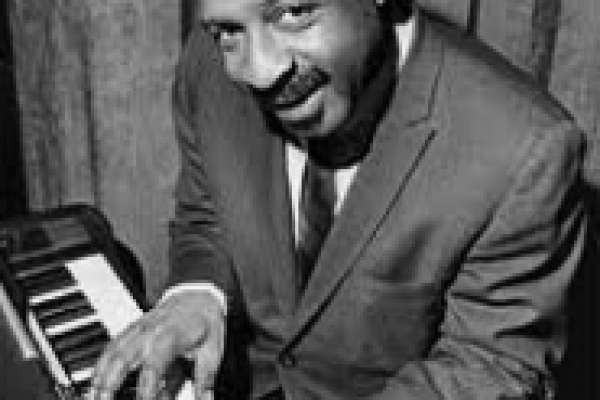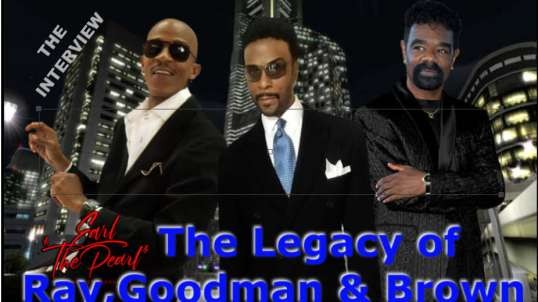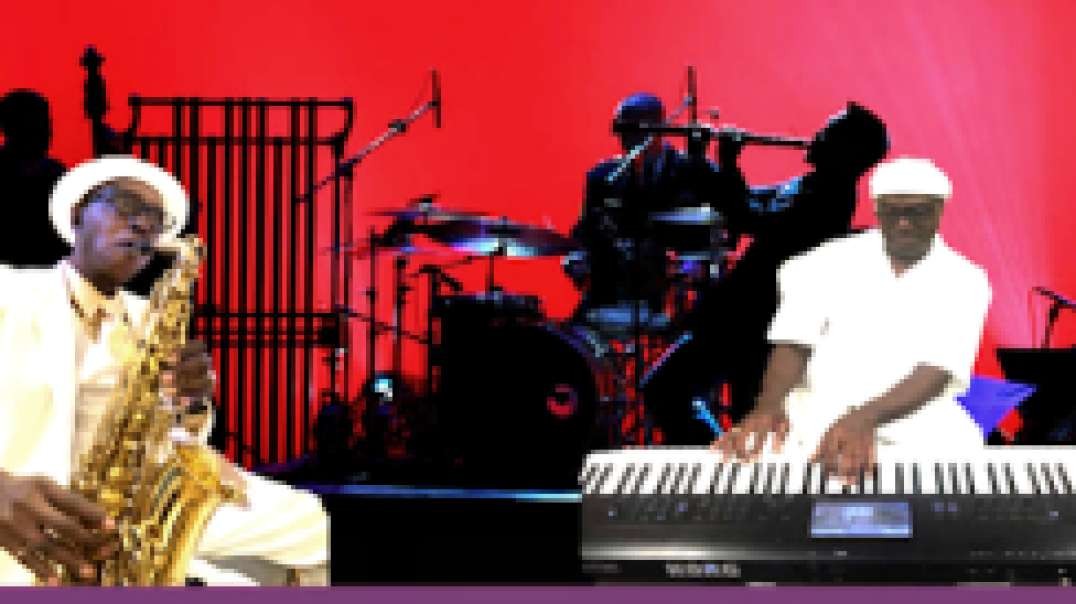The Radical Legacy of Erroll Garner
As we enter the pianist’s centennial year, a reissue series—and the history behind it—sheds new light on a jazz giant
BY TED PANKEN
If jazz polls don’t become collateral damage of COVID-19, Erroll Garner: The Octave Remastered Series (Mack Avenue) is the odds-on favorite for best reissue of 2020. It’s a 12-CD release, one for each LP that the Pittsburgh-born pianist (1921-1977) and his manager Martha Glaser (1921-2014) co-produced on their own Octave Records between 1959 and 1973.
Garner and Glaser established the imprint in 1962 after winning a $265,297.55 cash settlement in a protracted breach-of-contract lawsuit against Columbia Records, Garner’s primary label after 1950. During the decade that followed his signing with Columbia, he had become the most popular jazz instrumentalist in the world not named Louis Armstrong. A consequential factor in that process was his million-selling 1955 live album Concert by the Sea. When negotiating Garner’s contract renewal the year after that artistic and commercial milestone was released, Glaser insisted on a right-of-refusal clause; she successfully litigated it after Columbia subsequently released three albums comprising unauthorized tracks. In addition to the cash, Columbia was ordered to return the physical masters and ownership rights for all unreleased Garner recordings in its vaults made after June 1, 1956.
This landmark episode in the annals of artist rights wasn’t the first example of Glaser’s militant advocacy on behalf of her sole client. It followed an earlier lawsuit—also successful—against a shifty music publishing outfit to reclaim Garner’s copyright ownership of “Misty.” He debuted that megahit on a 1954 Mercury session, and would interpret it in practically every set he played for the rest of his life, usually before SRO audiences (his contract mandated that they be racially integrated) in concert halls and upscale nightclubs, where both “civilians” and cognoscenti honed into Garner’s instantly identifiable sound—melody-centric, ever-swinging—and highly developed technique.
Freed from corporate gatekeepers, Garner the A&R man consistently found fresh contexts for Garner the pianist to investigate on his new label. He composed a movie soundtrack, played a recital of less-traveled film favorites, found unexpected pathways through Top 40 hits. As the ’60s progressed, he expanded his rhythmic palette with Machito’s great conguero, Jose Mangual, and explored different sounds and textures. But strong as the Octave albums were, Columbia’s distribution and marketing muscle were absent, the zeitgeist was shifting, and Garner’s Q-score gradually diminished.
Garner bequeathed his recordings and copyrights to Glaser and her niece, Susan Rosenberg. Following his death, Glaser worked tirelessly to maintain his legacy, issuing a multi-LP Octave compilation for the Book of the Month Club in 1981 and licensing a reissue series on Telarc during the 1990s. In 2011, as failing health forced Glaser to disengage, Rosenberg took charge. She embarked on systematically archiving the Garner holdings housed in Glaser’s West 57th Street office—where several dozen metal cabinets, stacked floor to ceiling, held some 7,000 photographs and 8,000 well-preserved reel-to-reel tapes—and in seven separate storage facilities packed with records, letters, telegrams, contracts, artifacts, and memorabilia.
In 2014, Rosenberg used the hard-won royalties from “Misty” to launch an organization called the Erroll Garner Jazz Project (EGJP) as a vehicle “to identify and articulate” the archives. First, she recruited audio restoration guru Steve Rosenthal and his onetime employee Peter Lockhart—now EGJP’s director—to embark on a massive digitization project. Then she contacted pianist Geri Allen, the newly named director of the Institute of Jazz Studies at the University of Pittsburgh, with an offer to gift the holdings, to be deployed not only for research but also, Rosenberg says, “to create a living archive into Pittsburgh’s Black community.”
Once the archive was secured in Pittsburgh, Rosenberg and Rosenthal discovered a cohort of extra takes from Concert by the Sea, spurring the Project’s Octave Music Licensing LLC arm to sponsor a three-CD 60th-anniversary edition that returned Garner to mainstream jazz consciousness. Two subsequent historical first-releases—Ready Take One (Sony Legacy, 2016), documenting three separate studio sessions, and Night concert (Mack Avenue, 2018), capturing a 1964 recital at Amsterdam’s Concertgebouw—further burnished Garner’s posthumous “rehabilitation.”
The sound quality on the aforementioned albums and the entire Octave Remastered Series is immaculate. Executed with Plangent Process, a proprietary restoration technique that removes wow and flutter and repairs speed fluctuations, the transfers give you the sense, in Rosenthal’s words, of “sitting in the control room with Erroll playing in the other room and you’re hearing him through the speakers.” A dozen heretofore unissued bonus tracks, mostly Garner originals, are a consequential addition to his corpus. So is the unattenuated presentation of Garner’s abstract, sometimes delirious song introductions, often edited or—in the case of the discursive 78-second intro to “The Way You Look Tonight” on the restored One World Concert—excised from the original LPs.
The packaging contains ample value-added material: original liner notes and press blurbs, as well as a podcast series hosted by Thelonious Monk biographer Robin D.G. Kelley, conducting conversations with one present-day luminary per album. The commentators—who include Terri Lyne Carrington, Chick Corea, Vijay Iyer, Christian McBride, Jason Moran, Miles Okazaki, Eric Reed, and Helen Sung—listen closely, offer learned analysis of the music and intersectionally oriented exegeses about Garner’s character, musical production, and the larger landscape in which he operated.
None of these eminent legatees, however, cut to the chase quite as effectively as Garner, who summarized his intentions in a 1969 interview with Arthur Taylor that appears in the latter’s book Notes and Tones. “I’m always looking for something new,” Garner said. “As I can’t read music, I don’t have to say to myself, this is an arrangement I wrote six months ago and I have to play it note for note. I get as close as I can. Each time I play ‘Misty’—and I play ‘Misty’ I would say a thousand times a year—I add a little something. I feel that if you liked it last night and you come back to hear me tonight, maybe I can do it better. At the same time I’m creating, and it’s not becoming a bore because of sticking to one certain pattern.”
“Angular Saxon”
Garner preferred to document his identity in sound. The youngest of five children in a musical family, he could play back anything he heard, and was expressing himself on piano as he assimilated language. Before puberty, the prodigy was already a seasoned pro, having performed in Pittsburgh and environs on local radio broadcasts, at tent shows, vaudeville houses, riverboats, local clubs, and churches. He was ambidextrous, with huge hands and tapered fingers disproportionate to his 5’2″ frame, which facilitated the virtuoso style that he brought to New York in 1944, as documented on his first recordings (made in Danish baron and jazz enthusiast Timme Rosenkrantz’s apartment that fall). From then until his final Octave album, Plays Gershwin and Kern, Garner consistently extrapolated onto the piano the fullness, dynamic range, and inexorable swing feel of the great Black big bands—to Taylor, he cited Ellington, Lunceford, and Basie as favorites. Toward his orchestrated ends, he seamlessly switched meter, tempo, and key from section to section, establishing polyrhythmic patterns and beat subdivisions within his melodic flow, as though a third hand was performing a rhythm-guitar function while his right hand danced across the groove with equivalents of saxophone or trumpet figures. As Moran puts it, “He made the piano sparkle and glow.”
Tatum, Cecil Taylor, and Thelonious Monk were fans. So was George Shearing, who once explicitly parodied Garner on a recording of “I Could Have Danced All Night.” Ahmad Jamal, a fellow alumnus of Pittsburgh’s racially integrated, arts-oriented Westinghouse High School, emulated and expanded Garner’s piano-as-orchestra approach. He influenced brilliant individualists like Red Garland, Dave McKenna, Buddy Montgomery, and Jaki Byard.
Neither the jazz nor the mainstream press treated Garner with the same kind of respect. Perhaps his high visibility triggered skepticism in purists about his musical depth. Perhaps observers thought ear-playing denoted feckless immaturity (an analog to the Mozart character in Milos Forman’s Amadeus). Or maybe they pegged him as a savant-ish caricature like the blind 19th-century piano virtuoso Thomas Wiggins (“Blind Tom”), the effect of whose playing Willa Cather described “as if the soul of Beethoven had slipped into the body of an idiot.”
It could have been a matter of optics: Garner sat on a telephone book while performing, was less than loquacious on stage, accompanied his inventions with emphatic grunts, and wore his hair “patent leather style,” as Whitney Balliett wrote in a New Yorker profile published in 1982 but written during the 1950s. It’s a mostly admiring portrait, based on first-person reminiscences from two of Garner’s siblings, his high-school music teacher (who characterized Garner as “low I.Q.”), and a slew of musician friends and bandmates. But in the opening and closing paragraphs, Balliett tagged Garner as a practitioner of “primitive art,” a “folk” musician, a tag he also applied to Ellington and Armstrong.
Admiration and condescension coexist equally in a 1958 Saturday Evening Post profile, in which Dean Jennings (whose celebrity subjects during this era included John Wayne and Ernest Borgnine) contrasts paeans to Garner’s otherworldly skills with a litany of racially encoded idiosyncrasies. In Jennings’ narrative, Garner “absent-mindedly” leaves behind his clothes in hotels, “conducts a six-figure business on street corners or in phone booths,” “has never owned a piano,” carries hundreds of dollars worth of records on the road, and mistakes Bach for a brand of beer.
Midway through the piece, Jennings conveys to Garner a remark from percussionist Harold Farberman, whose compositions Max Roach recorded a few months after the article appeared. “He can’t write music,” Farberman said of the pianist. “But he uses all the classical techniques—diminution, augmentation, wide key ranges, polytonality, and rhythmic variations.” In response to that encomium, Jennings reported, “Garner’s big eyes rolled around like dice in a cup. ‘Man, that’s too angular Saxon for me. But if I read you right this cat likes me.’” For Jennings, this signifying riposte was “a typical Garner malapropism.”
Reading that makes Robin Kelley bridle. “Garner took a word that’s associated with musical analysis, snipped, and then used it in a pun—and everyone knows puns are the highest form of humor,” he says. “The writer does not even get it! You cannot have a low IQ, or be slow and naive, and say that. Garner’s sense of humor was somewhat similar to Monk, in that he liked to put you on. His job was to make some music, and he loved making music, which got translated into being called absent-minded or not really caring. The Black press, on the other hand, portrayed Garner as dignified, militant, race-conscious, intelligent. This is the Erroll Garner we don’t know.”
Trickster at Play
Thanks to COVID, Kelley’s Octave Remastered Series podcast project—undertaken at Rosenberg’s and Lockhart’s suggestion—is incomplete as of this writing. But one of his guests, guitarist Miles Okazaki, writes in the notes to his summer 2020 album Trickster’s Dream that they discussed how Garner’s “marvelous and joyful inventions … meshed perfectly with the idea of the role of the Trickster as the one who exists on the border, opening doorways in the consciousness of what is possible, to say ‘it doesn’t have to be this way.’”
It’s interesting to consider the Trickster archetype when speculating why Geri Allen, who’d previously done deep dives into the legacies of such heroes as Mary Lou Williams, Cecil Taylor, Herbie Hancock, and McCoy Tyner, decided to celebrate Garner with a concert at the 2015 Monterey Jazz Festival where she, Jason Moran, and Christian Sands reimagined Concert by the Sea. After a few more Garner performances with Sands, Allen asked Rosenberg and Lockhart to retain his services “to take over the youth market,” Sands says. When Allen died of pancreatic cancer in 2017, Sands became the EGJP’s creative ambassador.
Among Sands’ duties, he reports, are giving private masterclasses and larger lectures, participating in the remastering process for the various reissues, and performing rearranged Garner pieces in a speculative manner with his Highwire Trio. “For me, it’s a fresh look at what Erroll might play if he were exposed to all the music that’s going on today because he was such a master at using all the sounds around him yet keeping his own style,” Sands says. “You take the information that Garner supplied, whether it’s the locked hands, or the octaves, playing with dissonance, the push-and-pull of the time, or just his left hand coordinating with his right hand. We can use so many of these tools to express ourselves.”
For Sands, the introductions are portals into Garner’s soul. “They contain his absolute raw talent and ideas,” he says. “His arrangements of standards that used the form of the songs were unbelievable, but before that, he has complete rein to do whatever he wants. Sometimes the introductions take elements of the song that he likes, but it’s often as though it were its own free, composed piece.”
As an example, Sands references Garner’s 20-second preface to “Gemini,” a brisk, rolling gospel blues that titles his tenth Octave album, recorded in 1971. “He previews a bit of the melody, plays around with it, molding it at will—because he can do anything. He’ll play it in the right hand. He’ll play it in the left hand. He’ll double it with octaves, then he’ll change the whole idea and come down towards the left side of the piano. He’s deconstructing his own playing, showing us the melody, the groove, the blues sound. Chances are he won’t play it the same way again. It’s honest and true, and you hear his beautiful spirit, how warm a person he must have been.”
A YouTube clip of the 2015 Monterey concert documents Moran’s application of Garner’s raw materials to his personal argot on “Night and Day.” Inspiring his approach was Garner’s introduction to “Mack the Knife” on One World Concert, which Moran discussed with Kelley in the podcast. He recalled that Byard, Moran’s college mentor, introduced him to Garner, but he had his “conversion experience” later when he heard Garner’s 1950 recording of “Poor Butterfly.”
“I fell out of my chair,” Moran said. “I listened to this song incessantly because of the way Erroll drags the beat, which I felt J Dilla was starting to do in his production at the time. Erroll’s left hand is pumping it, sometimes anticipating the beat, and his right hand is dipping behind it—but he’s doing that in both hands. It’s buoyant but it also sinks. I remember trying to transcribe parts of that intro, because I thought, ‘I need to know what it is—I have to make my own composition based off of that.’”
Vijay Iyer also found inspiration in Garner’s rhythmic legerdemain, honing in on “the thickness and intensity” of his sound, “the way he radiates groove, holding it very grounded in his left hand while his right hand tends to dance across and against that with a graceful, fulsome expression.” As an example, he mentions Garner’s “radically Other” interpretation of “I Got Rhythm” on Plays Gershwin and Kern.
“His version loses all its Tin Pan Alley quality, and becomes like a deep blues march,” Iyer says. “He sets it up with an extravagantly irregular, wildly contrapuntal introduction, but you realize that he’s heading straight for a target, laying it down in a way that the rhythm section catches because of the quality of the pulse and groove. In moments like that, I hear a connection to a particular axis of Black American piano playing that’s ‘deep in the keys,’ as they say, where the articulation of sound has this animated and sharp angular quality. In some ways, it doesn’t matter what the songs are. It’s not so different from Ahmad Jamal or Tatum—he could make any song into what he wanted it to be.
“It always feels like you’re getting a glimpse of a way of being, a way of living,” he continues. “Garner had that special force. It’s often written that his music expresses pure joy or happiness. I think some of that is about the white gaze, what white journalists and critics wanted to see Black people doing—happy, hard-working Black people, not complaining. Basically, that’s at the heart of white supremacy. On the other hand, you get the sense that he led his own path. That’s a different kind of ‘black joy’ that I’m interested in studying.”
The novelistic spectrum of emotions that Garner could evoke was a palpable thing for Kelly Martin, who played drums in Garner’s trio alongside bassist Eddie Calhoun from 1956 to 1966. “Erroll loved people and he loved to play for them,” he told Balliett. “His way of playing and creating was all in his face, and his way of talking was in the piano. If he was down or upset, we could hear it. He didn’t like to rush into what he was going to play, and those long, crazy introductions gave him time to settle himself. We almost always wore tuxedos. Eddie Calhoun used to say, ‘Man, it’s hard to swing in a tuxedo,’ and I seconded that. Erroll could make anybody swing, though.”
In short, Garner conveyed the human condition to a mass audience. He did so at multi-layered levels of wit and sophistication. He was always improvised. As Jennings (insightfully) observed, he treated “each concert or recording session as though it might be his last.” The joy, ebullience, and high romance associated with his persona have captured listeners from multiple backgrounds for 75 years. And once today’s listeners absorb the lessons that the Octave Remastered Series offers, “activist” and “radical” may join those ambiguously subjective descriptors as common parlance in the Garner lexicon.









No Comments